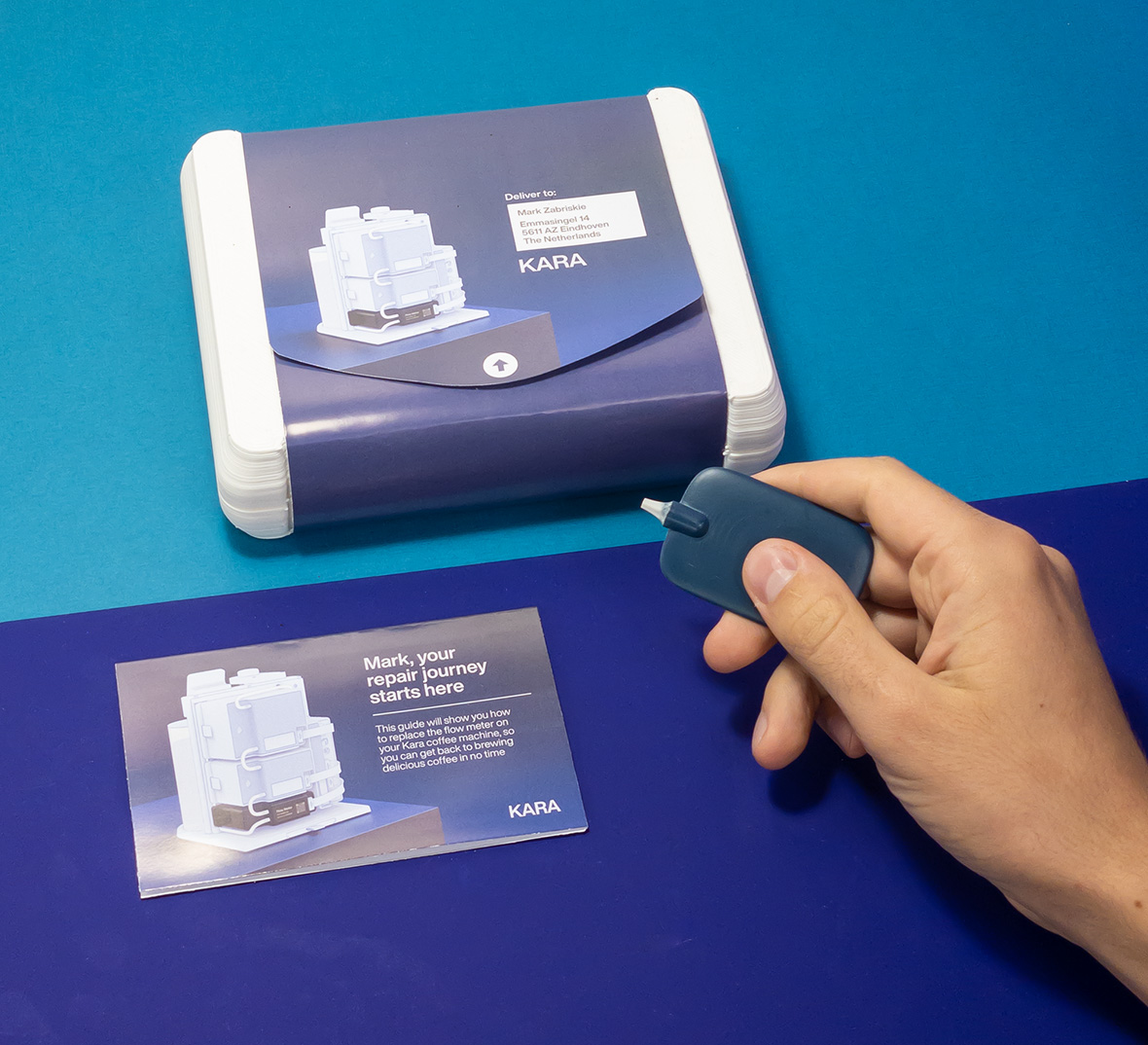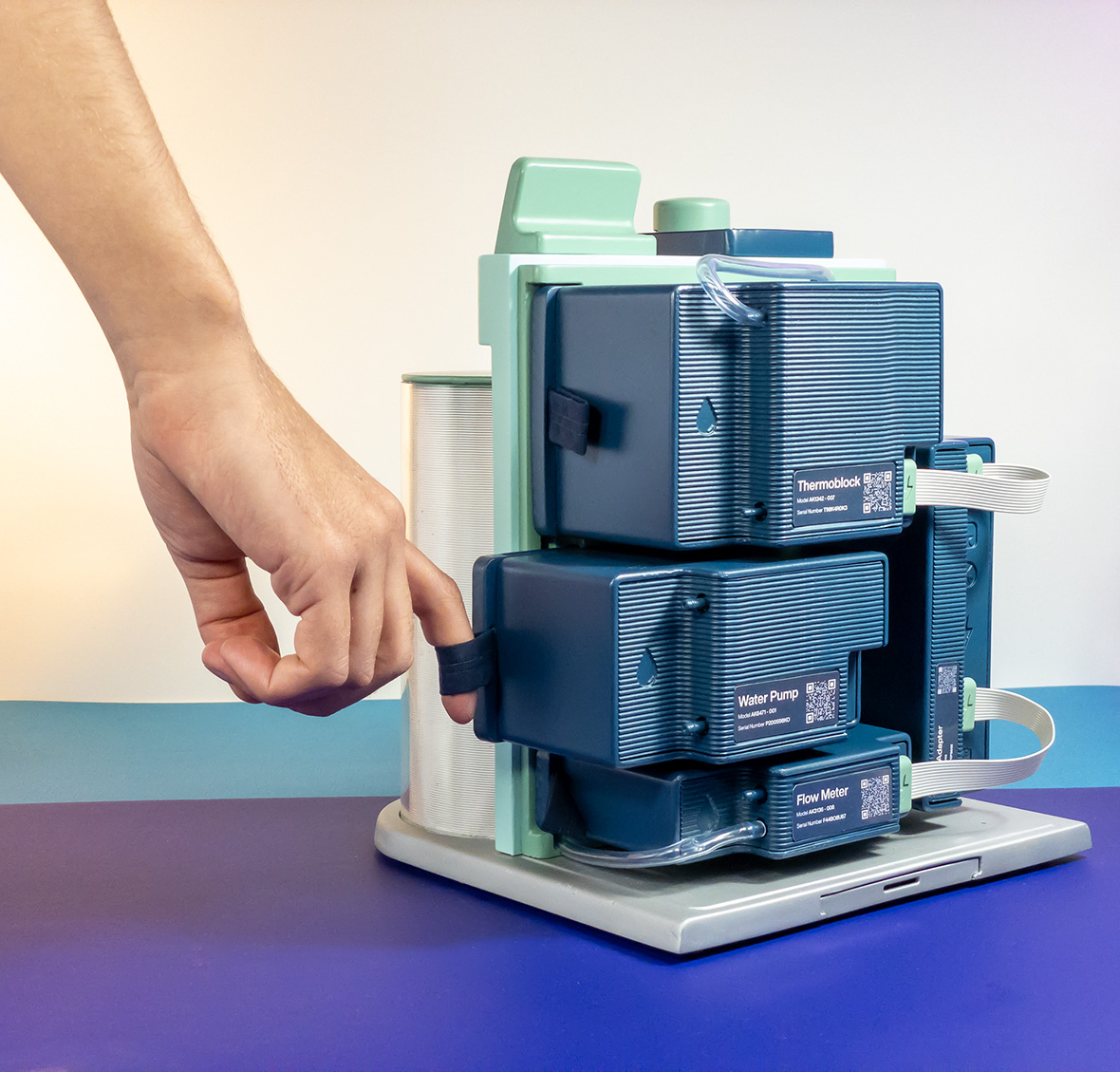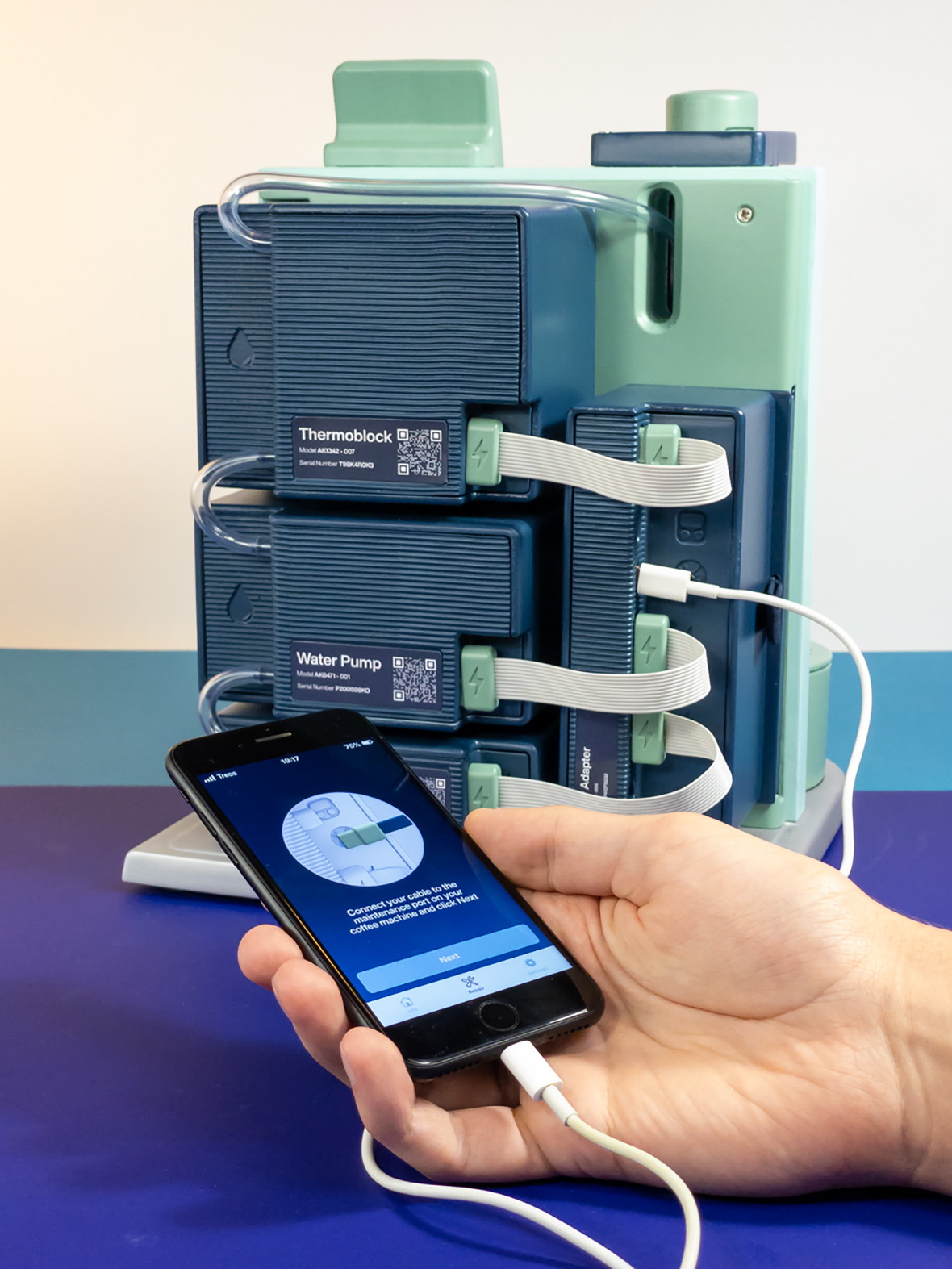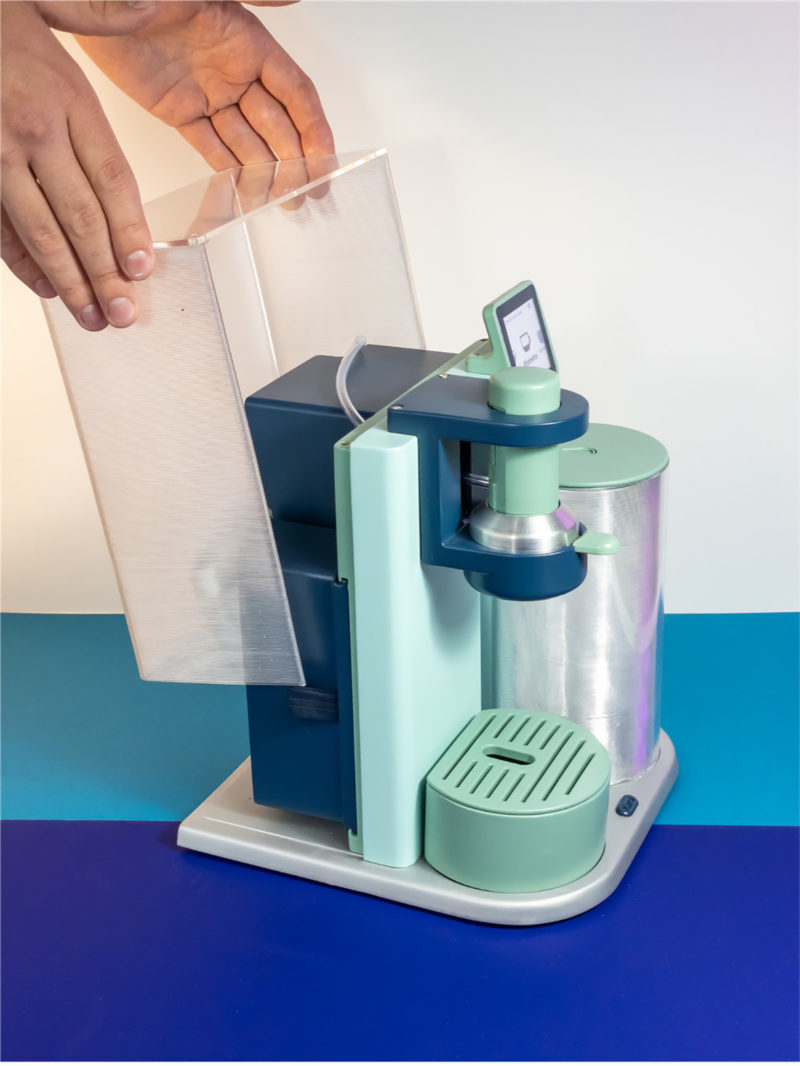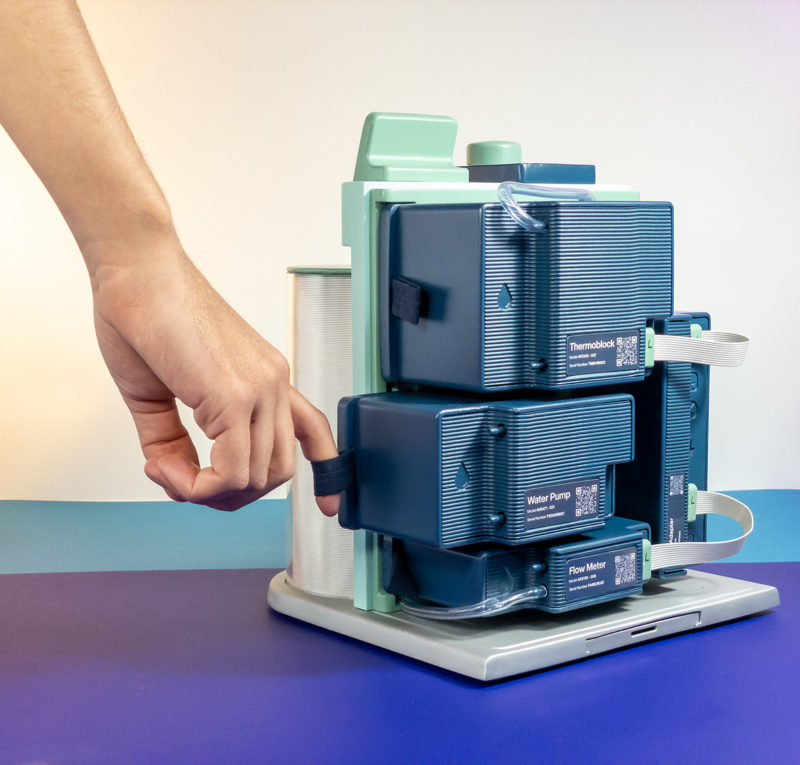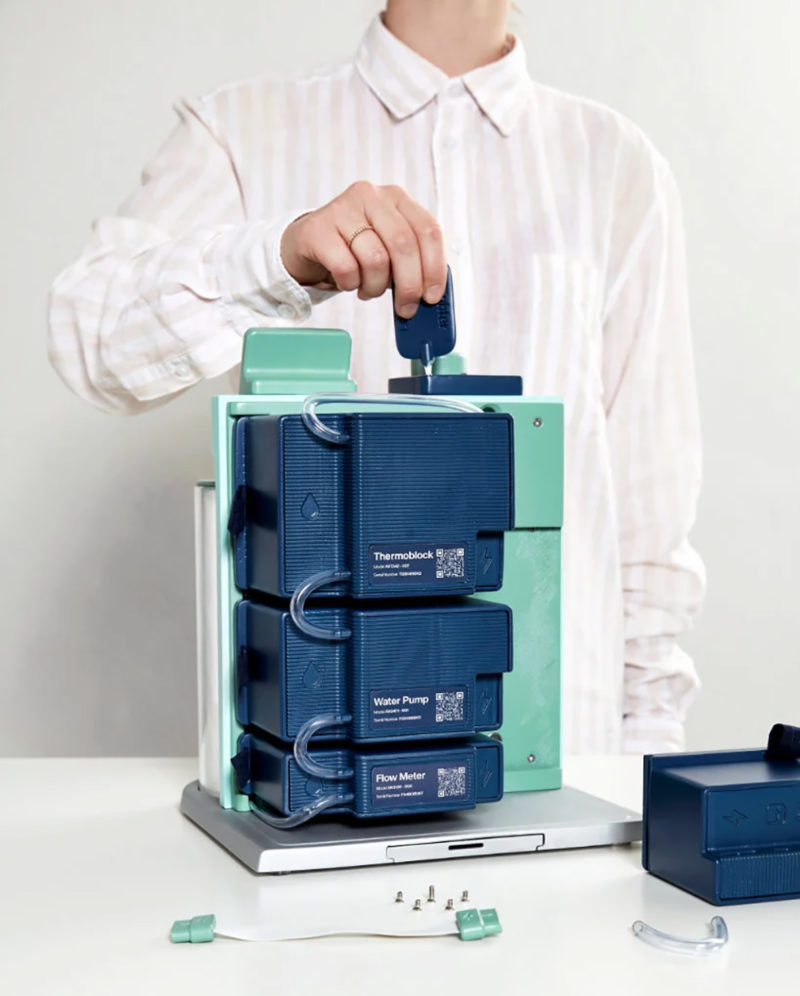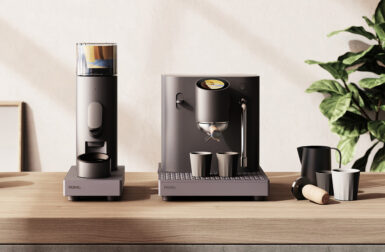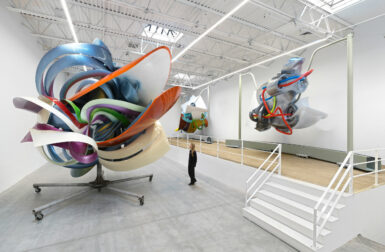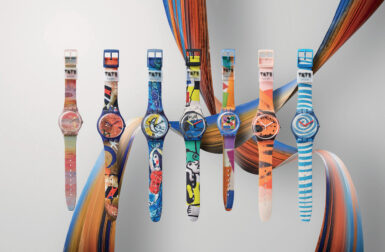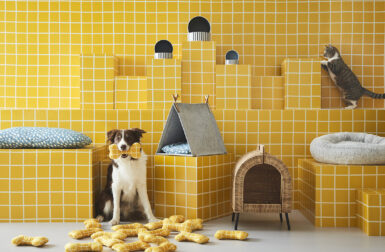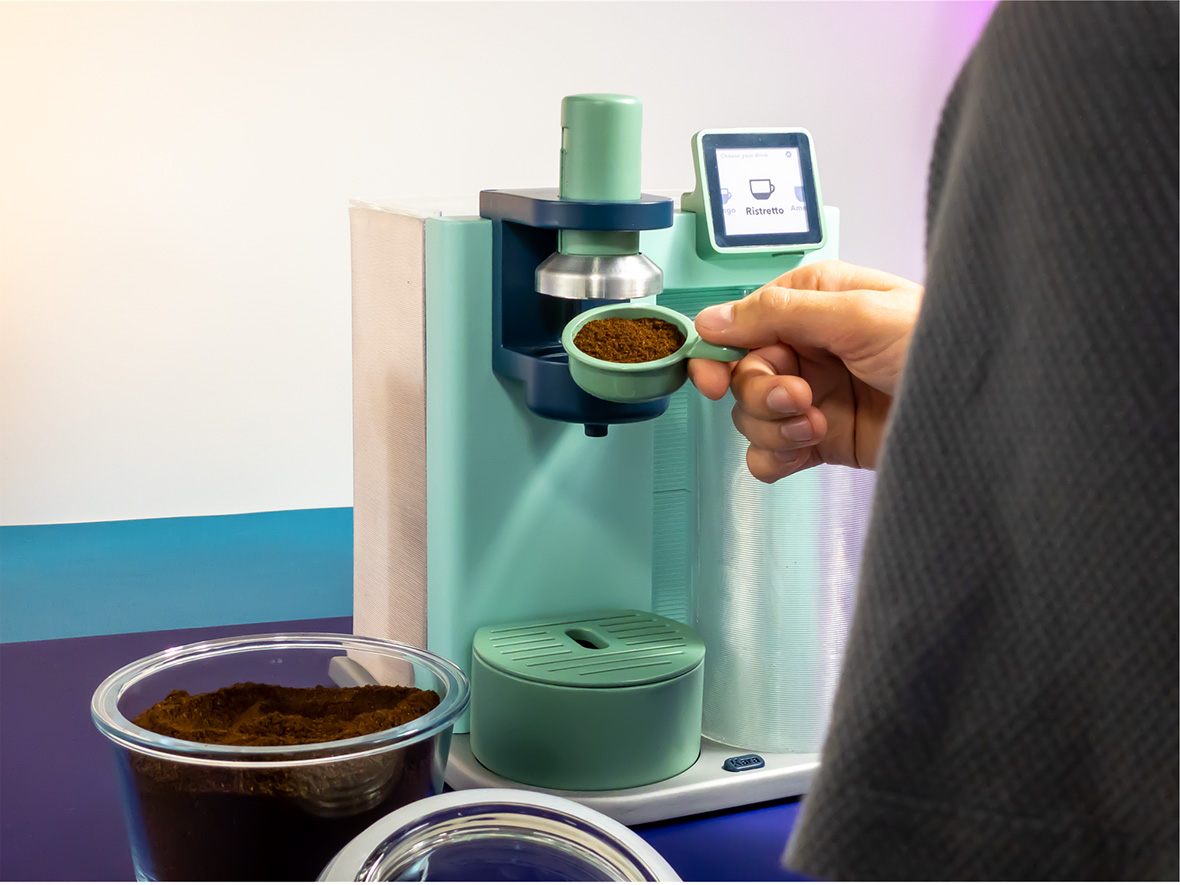
Thomas Mair’s Kara coffee maker represents the antithesis of the majority of consumer electronics and home appliances. Engineered to be repairable, recyclable, and manufactured with non-proprietary components allowing its user easy access to maintain the Kara coffee maker for the extent of its lifetime, the Kara openly celebrates its internals to demystify maintenance and repairability.
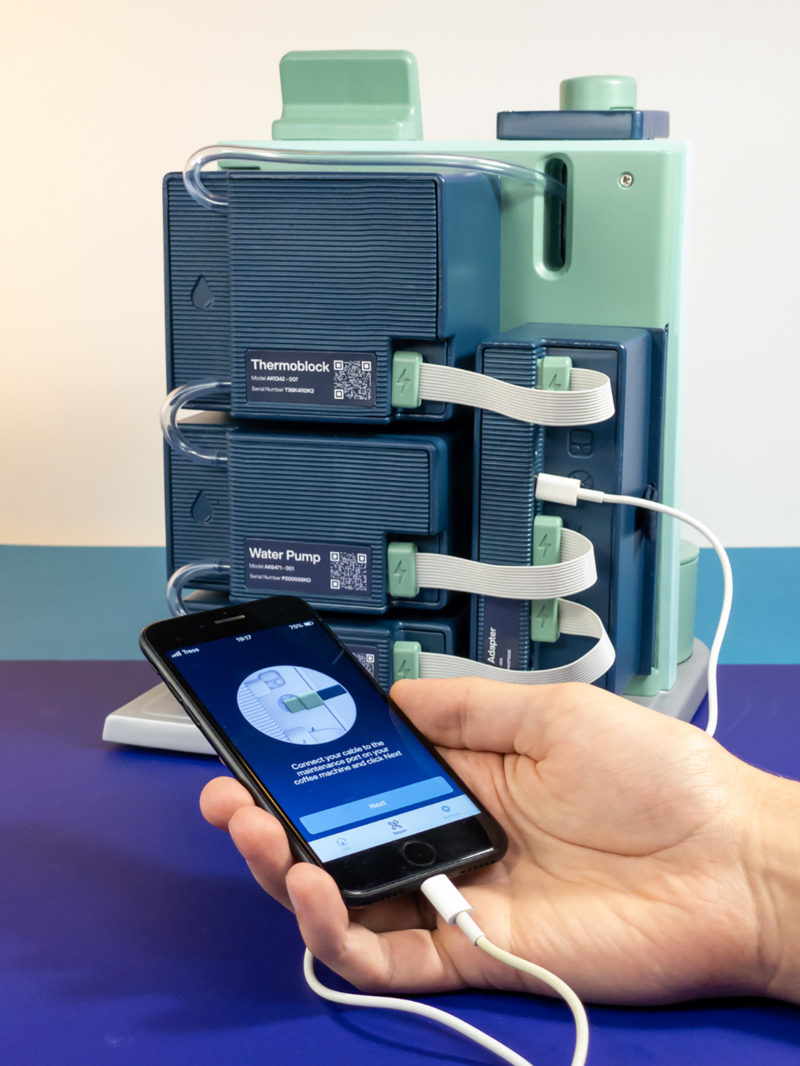
Users can connect to the Kara directly using their smartphone to run maintenance and diagnostics themselves to identify issues.
While the front of the Kara offers a friendly front face with recognizable components typical of many consumer espresso makers, such as a brew head assembly, tamper, water tank, and small touchscreen display, Mair’s design communicates something more unique in the back. Behind a transparent back case, a quartet of stacked bold blue modules are connected using magnets and fabric loop cables.
With each part clearly labeled to reveal their purpose – including the largest heating element up top, a water pump in the middle, flow meter at the bottom, and a power module where each component connects to operate as a single unit – parts are as easy to disassemble as first piece together.
Additionally, a QR code allows users to access additional information about each module, and a small drawer of repair tools are integrated right into the coffee maker’s base.
Mair’s vision is one where the user is empowered to investigate any issues themselves, and repair it, or even replace damaged or non-working sections with 3D printed parts, with the entirety of its design transparent both physically and conceptually.
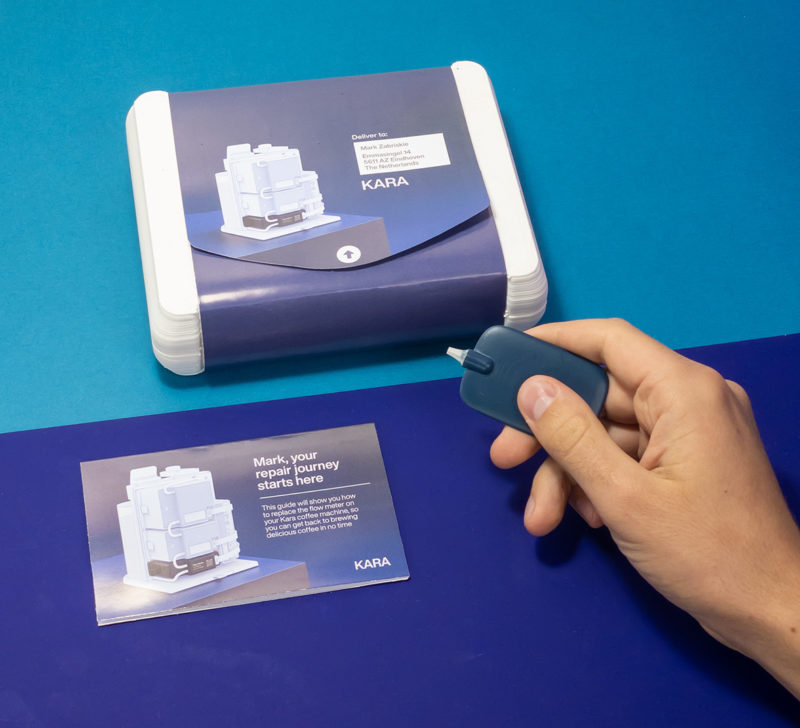
The housing is designed so every part can be 3D printed in lieu of the Kara’s original replacement parts, and technical components can be replaced or substituted because they are part of an open system, accessible using the included repair tools.
“When an appliance breaks, instead of fixing it, we replace it. When we do, it’s estimated that only one fifth of electric goods actually get recycled. This is not, and cannot be sustainable,” says Mair, “Objects should be built to last, so we don’t have to replace them constantly. This can include ways to refurbish or service appliances, similar to what you would do to a car.”
More about the Kara concept here.


